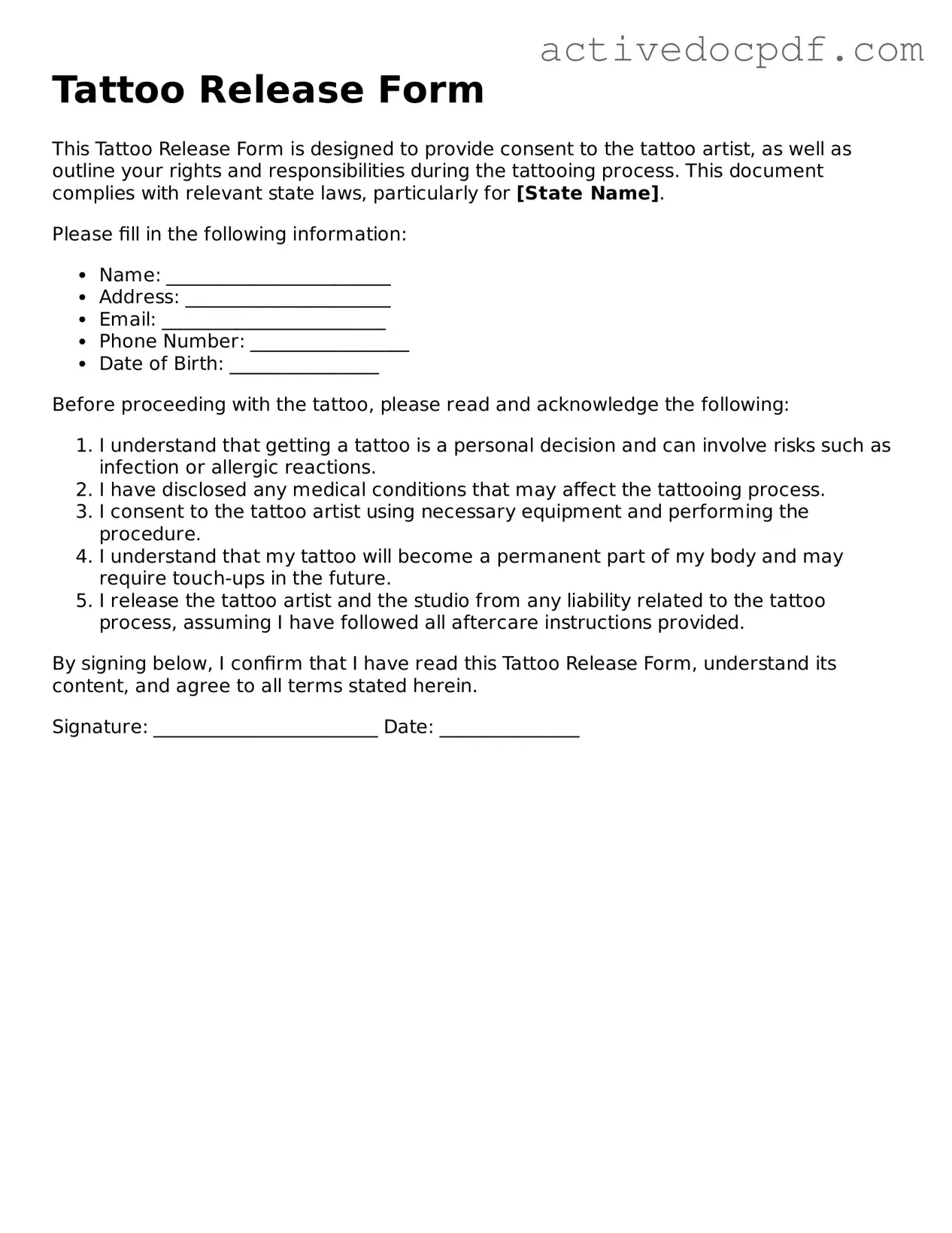A Tattoo Release Form is a document that allows a tattoo artist to obtain permission from a client to create a tattoo on their body. This form serves as a legal agreement that outlines the client's consent, ensuring they understand the risks and responsibilities associated with getting a tattoo. It protects both the client and the artist by clarifying expectations and safeguarding against potential disputes.
Signing a Tattoo Release Form is crucial for several reasons:
-
Informed Consent:
It ensures that you understand the procedure, potential risks, and aftercare involved with getting a tattoo.
-
Legal Protection:
The form protects the tattoo artist from liability in case of adverse reactions or dissatisfaction with the tattoo.
-
Documentation:
It provides a record of your consent, which can be important if any issues arise later.
A typical Tattoo Release Form includes the following information:
-
Your full name and contact information
-
The name and contact details of the tattoo artist or studio
-
A description of the tattoo design and its placement on your body
-
A statement of your understanding of the risks involved
-
A section for your signature and the date
Can I get a tattoo if I’m under 18?
In most states, you must be at least 18 years old to get a tattoo without parental consent. However, some states allow minors to get tattoos with the permission of a parent or guardian. It’s essential to check your local laws and regulations regarding tattooing minors. If you are under 18, ensure that a parent or guardian is present to sign the Tattoo Release Form on your behalf.
Once you have signed the Tattoo Release Form, it is generally considered a binding agreement. However, if you have concerns or decide to change your mind, communicate with your tattoo artist as soon as possible. Depending on the studio's policies, they may allow you to postpone or cancel your appointment. Remember, it’s always best to be certain before proceeding with a tattoo.
Yes, reputable tattoo studios take your privacy seriously. Your personal information is typically stored securely and used only for the purposes outlined in the Tattoo Release Form. Always inquire about how your data will be handled if you have concerns. It’s your right to know how your information is protected.
